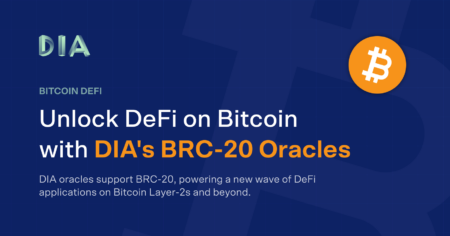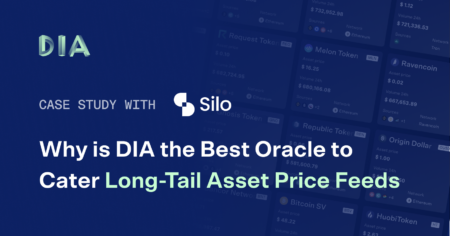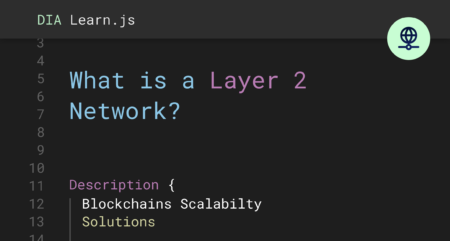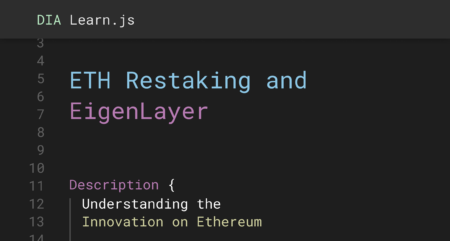What is a Decentralized Exchange – DEX?
A Decentralized Exchange (DEX) is a pivotal component of the cryptocurrency ecosystem. Unlike traditional exchanges, DEXs operate without a central authority, providing a platform for peer-to-peer cryptocurrency transactions.

What is a Decentralized Exchange (DEX)?
A Decentralized Exchange (DEX) is a pivotal component of the cryptocurrency ecosystem. Unlike traditional exchanges, DEXs operate without a central authority, providing a platform for peer-to-peer cryptocurrency transactions. DEXs are built on blockchain technology, which ensures transparency and security. Each transaction on a DEX is recorded on the blockchain, making it immutable and resistant to tampering. DEXs are accessible to anyone with an internet connection and a compatible wallet. This global accessibility democratizes trading and financial inclusion.
At the heart of a DEX’s operation are smart contracts. These are self-executing contracts with the terms directly written into code, facilitating trustless and automated transactions between parties. One of the defining features of a DEX is that users retain full control of their funds. This contrasts with centralized exchanges, where users’ funds are held by the exchange.
Types of DEX
There are different types of DEXs, such as Automated Market Makers (AMMs) and order book-based exchanges. Each type has its unique mechanism for facilitating trades:
- Automated Market Makers (AMMs): These platforms, like Uniswap and SushiSwap, use liquidity pools instead of traditional order books. Users provide liquidity to these pools and earn fees from trades that occur within the pool.
- Order Book DEXs: Platforms like IDEX and 0x operate similarly to traditional exchanges, with an order book matching buy and sell orders. They offer more traditional trading experiences but with the security and autonomy of blockchain technology.
- Liquidity Aggregator DEXs: Examples include 1inch and Matcha. These platforms aggregate liquidity from various DEXs to offer users better pricing and lower slippage by routing trades through multiple DEXs.
- Cross-Chain DEXs: Platforms like Thorchain allow trading across different blockchains, enabling users to trade assets between blockchains without needing a centralized intermediary. They expand the scope of trading pairs beyond a single blockchain’s ecosystem.
While DEXs offer several advantages, they also have limitations, including less intuitive interfaces for beginners and sometimes lower liquidity than centralized exchanges. As the blockchain and crypto industry evolves, DEXs are expected to become more user-friendly, secure, and integrated with broader financial systems, playing a crucial role in the future of finance.
DEX vs CEX: Key Differences
| Aspect | Centralized Exchange (CEX) | Decentralized Exchange (DEX) |
|---|---|---|
| Central Authority | Managed by a single entity. | Operates on a decentralized network without central control. |
| Custody of Funds | Users’ funds are held by the exchange. | Users maintain control over their private keys and funds. |
| Security Aspects | Often targets for hackers due to centralized nature. | Offers enhanced security by distributing risk across a decentralized network. |
| Anonymity and Privacy | Requires KYC verification, less anonymity. | Typically no personal information required, offering greater anonymity. |
| Liquidity and Volume | Generally higher liquidity and trading volume. | Catching up with innovations like liquidity pools. |
| User Interface and Experience | More user-friendly interface, suitable for beginners. | Steeper learning curve, especially for crypto newcomers. |
| Range of Services | Broader range, including fiat-to-crypto trading, margin trading, etc. | More focused on crypto-to-crypto operations. |
| Fee Structure | May have higher trading fees. | Lower trading fees but includes network fees like gas fees. |
| Regulatory Compliance | Usually regulated and must comply with financial regulations. | Operates with minimal regulatory oversight. |
| Accessibility and Censorship Resistance | May be restricted or banned in certain regions. | Globally accessible and resistant to censorship. |
How Do DEXs Work?
Unlike centralized platforms, DEXs operate on a distributed network of computers, ensuring no single entity controls the exchange, enhancing security and reducing points of failure.
Features of DEXs
- Permissionless and Trustless Nature: DEXs offer a permissionless and trustless trading environment, enabled by smart contracts. Users can trade without needing approval and without trusting a central authority with their funds, as these automated contracts execute trades and enforce terms directly on the blockchain, eliminating intermediaries.
- Wallet Integration: Users interact with DEXs through their blockchain wallets. These wallets are connected directly to the DEX, allowing for direct peer-to-peer transactions without the need for a third party. This also ensures a secure form of self-custody, allowing users to maintain direct control over their assets.
- Liquidity Pools: Many DEXs use liquidity pools instead of traditional order books. Users can contribute assets to these pools and earn transaction fees as liquidity providers.
- Token Swapping Mechanism: DEXs typically allow users to swap various cryptocurrencies. This process is facilitated by smart contracts, which automatically execute trades based on pre-set conditions.
- AMM-Based Pricing: Automated Market Makers (AMMs) are used in many DEXs to determine prices. They use a mathematical formula to price assets based on their supply in the liquidity pool.
- Community Governance: Many DEXs have a decentralized governance model, allowing token holders to vote on key decisions, further emphasizing the community-driven nature of these platforms.
Popular DEXs
| DEX Name | Blockchains | Key Features | Popular Pairs | Unique Selling Point |
|---|---|---|---|---|
| Uniswap | Ethereum, Arbitrum, Optimism, Polygon, Base, BNB Chain, Avalanche, Celo | Automated Market Maker, Liquidity Pools | ETH/USDT, UNI/ETH | Large user base, extensive liquidity |
| SushiSwap | Aptos, Ethereum, Arbitrum, Base, Polygon, Scroll, Optimism, Polygon, Linea, +35 | Yield Farming, Onsen Program | SUSHI/ETH, USDT/ETH | Community governance, multi-chain support |
| PancakeSwap | BNB Chain, Ethereum, zkSync Era, Linea, Base, +3 | AMM, Yield Farming, NFTs | CAKE/BNB, BUSD/BNB | Low transaction fees, diverse features |
| Curve Finance | Ethereum, Arbitrum, Aurora, Avalanche, Base, Celo, +6 | Stablecoin trading, low slippage | DAI/USDC, USDT/USDC | Optimized for stablecoin swaps |
| Balancer | Ethereum, Optimism, Gnosis Chain, Polygon, Arbitrum, Base, Avalanche | Customizable liquidity pools, multi-token pools | BAL/ETH, WETH/DAI | Flexible pool compositions |
Share of DEX Volume
The following chart shows the distribution of the DEX across protocols.
What is Liquidity Pooling?
Liquidity pooling is a key mechanism in many DEXs, allowing for efficient and decentralized trading. It involves pooling funds from various users to provide liquidity for trades.
How Liquidity Pools Work
In a liquidity pool, users deposit pairs of tokens, which are then available for others to trade against. These pools facilitate token swapping without the need for traditional buyers and sellers. Users who deposit their tokens into these pools, known as liquidity providers (LPs), earn fees from the trades that occur in the pool, proportional to their share of the pool.
Key Concepts
- Impermanent Loss: A potential risk for liquidity providers is impermanent loss, which occurs when the price of deposited tokens changes compared to when they were deposited. This can lead to financial loss if not managed properly.
- Incentive Mechanisms: Many DEXs offer additional incentives like governance tokens or yield farming opportunities to attract more liquidity providers.
- Slippage: Large trades in small pools can lead to significant price slippage.
- Price Impact: The size and depth of the pool affect the price impact of trades.
What are the Fees on a DEX?
Trading Fees Overview
DEXs typically charge a trading fee for each transaction. These fees are generally lower than those of centralized exchanges (CEXs), but they can vary widely between different DEXs. The fees are categorized in the following groups:
- Fee Distribution: In many DEXs, a portion of the trading fees goes to liquidity providers as an incentive for contributing to liquidity pools. This distribution model supports the ongoing liquidity of the platform.
- Network Fees: Apart from trading fees, users must also consider network fees, such as gas fees on the Ethereum network. These fees are paid to blockchain miners or validators for processing transactions. Gas fees can be quite volatile, especially on networks like Ethereum. During periods of high congestion, these fees can increase significantly, impacting the overall cost of trading.
- Token Swap Fees: When swapping tokens, users may incur additional fees, depending on the specific mechanics of the DEX and the tokens involved.
Advantages over CEX
- Withdrawal and Deposit Fees: Unlike CEXs, DEXs typically do not have deposit or withdrawal fees, as users transact directly from their wallets.
- Fee Transparency: One of the advantages of DEXs is the transparency of fees. Users can usually see the exact fee structure and calculate the costs of their transactions upfront.
- No Hidden Fees: DEXs are known for not having hidden fees. The costs are encoded in smart contracts and are visible to all users on the blockchain.
The fee structure can influence trading strategies, especially for high-frequency traders or those making large transactions. As the DeFi space evolves, some DEXs are experimenting with different fee models to improve efficiency and attract more users, such as dynamic fee structures based on network congestion.
Example: Uniswap TVL and Fees
The interactive chat below shows the historical total value lock on the DEX Uniswap, compared with the fees that the same protocol generated. Data according to Defillama
What Types of Assets Can I Trade on a DEX?
- Cryptocurrencies: DEXs are known for offering a broad array of cryptocurrencies, including many smaller or less mainstream tokens not available on centralized exchanges.
- Synthetic Assets and Derivatives: Some DEXs offer synthetic assets and derivatives, which are blockchain-based representations of real-world assets or financial instruments.
- Liquidity Pool Tokens: Users can also trade liquidity pool tokens, which represent their share in a liquidity pool, allowing them to participate in yield farming and other DeFi activities.
- NFTs and Unique Digital Assets: With the rise of NFTs (Non-Fungible Tokens), some DEXs are beginning to incorporate NFT trading, expanding their asset offerings beyond traditional cryptocurrencies.
Furthermore, when it comes to the listing of new tokens, Decentralized Exchanges (DEXs) hold a notable edge over Centralized Exchanges (CEXs). This is primarily because DEXs are often the first platforms to list new cryptocurrencies, particularly those originating from decentralized finance (DeFi) initiatives and Initial Coin Offerings (ICOs).In contrast, CEXs often require more time to list these tokens, and in some cases, may not list them at all.
However, it’s important to note that DEXs generally do not facilitate trading with fiat currencies. As a result, their trading activities are predominantly confined to transactions between different cryptocurrencies.
The Synergy of Oracles and DEXs in DeFi: The DIA Example
Oracles like DIA and decentralized exchanges (DEXs) are integral to the decentralized finance (DeFi) ecosystem. DIA exemplifies this interplay by sourcing trade data from a variety of exchanges, including DEXs, to construct transparent and accurate price oracles. By subscribing to swap events in DEX liquidity pools, DIA ensures high data precision, which is crucial for reliable DeFi applications. This approach not only enhances the integrity of data feeding into DeFi platforms but also addresses risks like price manipulation, ensuring a robust foundation for blockchain use cases.
Both DIA and DEXs play essential roles in DeFi, enabling a broad range of blockchain applications. DIA’s commitment to transparency and its method of integrating data from multiple sources, including DEXs, exemplify the collaborative nature of these technologies. Together, they strengthen the DeFi ecosystem by providing reliable, diversified data sources and contributing to the advancement of blockchain technologies.








